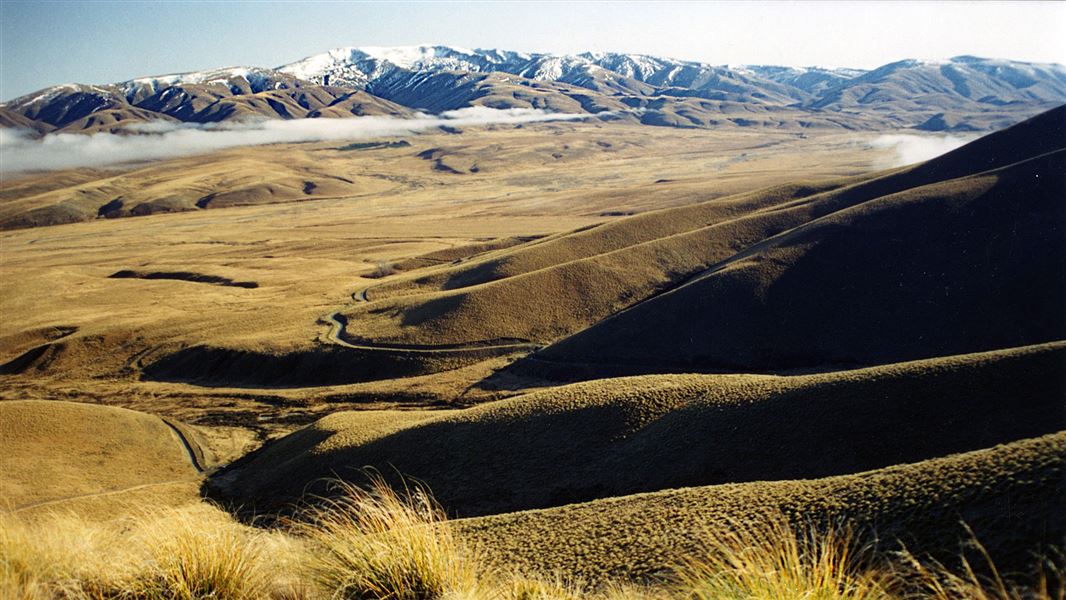
Located in the Canterbury and Otago regions
Introduction
Oteake Conservation Park covers large tracts of the St Bathans, Ewe, Hawkdun, Ida and St Marys ranges, and parts of the upper Manuherikia Basin.It protects outstanding landscapes including mountainous high country, tussock plateaux, scree, wetlands and indigenous shrubland.
You can visit the historic Buster Diggings, and explore spectacular sculptures created by gold mining and stay overnight in Ida Railway Hut, a former high country mustering hut.